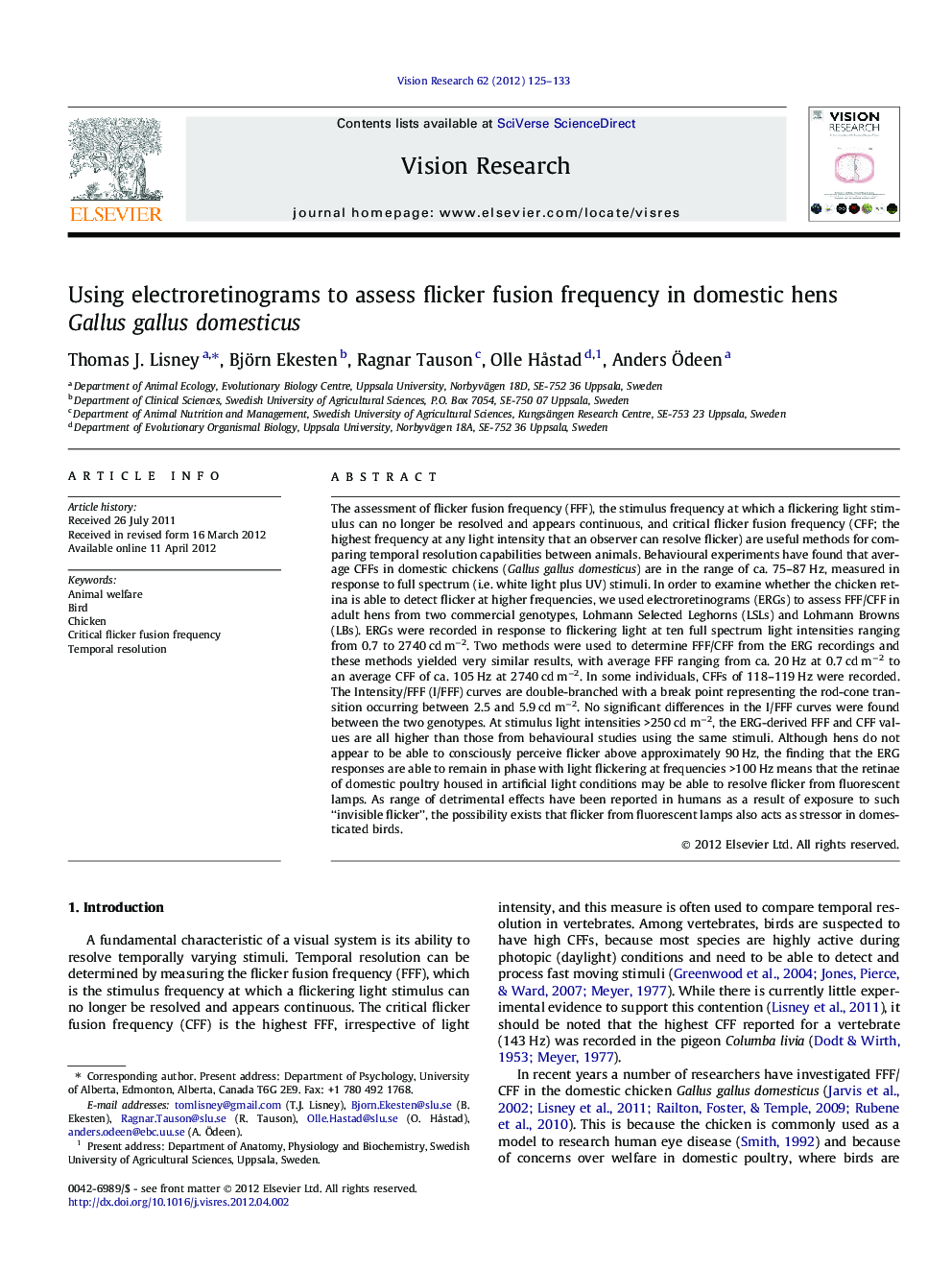| Article ID | Journal | Published Year | Pages | File Type |
|---|---|---|---|---|
| 6203692 | Vision Research | 2012 | 9 Pages |
The assessment of flicker fusion frequency (FFF), the stimulus frequency at which a flickering light stimulus can no longer be resolved and appears continuous, and critical flicker fusion frequency (CFF; the highest frequency at any light intensity that an observer can resolve flicker) are useful methods for comparing temporal resolution capabilities between animals. Behavioural experiments have found that average CFFs in domestic chickens (Gallus gallus domesticus) are in the range of ca. 75-87 Hz, measured in response to full spectrum (i.e. white light plus UV) stimuli. In order to examine whether the chicken retina is able to detect flicker at higher frequencies, we used electroretinograms (ERGs) to assess FFF/CFF in adult hens from two commercial genotypes, Lohmann Selected Leghorns (LSLs) and Lohmann Browns (LBs). ERGs were recorded in response to flickering light at ten full spectrum light intensities ranging from 0.7 to 2740 cd mâ2. Two methods were used to determine FFF/CFF from the ERG recordings and these methods yielded very similar results, with average FFF ranging from ca. 20 Hz at 0.7 cd mâ2 to an average CFF of ca. 105 Hz at 2740 cd mâ2. In some individuals, CFFs of 118-119 Hz were recorded. The Intensity/FFF (I/FFF) curves are double-branched with a break point representing the rod-cone transition occurring between 2.5 and 5.9 cd mâ2. No significant differences in the I/FFF curves were found between the two genotypes. At stimulus light intensities >250 cd mâ2, the ERG-derived FFF and CFF values are all higher than those from behavioural studies using the same stimuli. Although hens do not appear to be able to consciously perceive flicker above approximately 90 Hz, the finding that the ERG responses are able to remain in phase with light flickering at frequencies >100 Hz means that the retinae of domestic poultry housed in artificial light conditions may be able to resolve flicker from fluorescent lamps. As range of detrimental effects have been reported in humans as a result of exposure to such “invisible flicker”, the possibility exists that flicker from fluorescent lamps also acts as stressor in domesticated birds.
⺠ERG was used to assess flicker fusion frequency (FFF) in hens from two genotypes. ⺠Hens exhibit a double-branched Intensity/FFF (I/FFF) curve. ⺠There was no significant difference in the I/FFF curves between genotypes. ⺠The average critical FFF (CFF) was ca. 105 Hz. ⺠Flicker from fluorescent lamps may act as a stressor in domesticated poultry.
